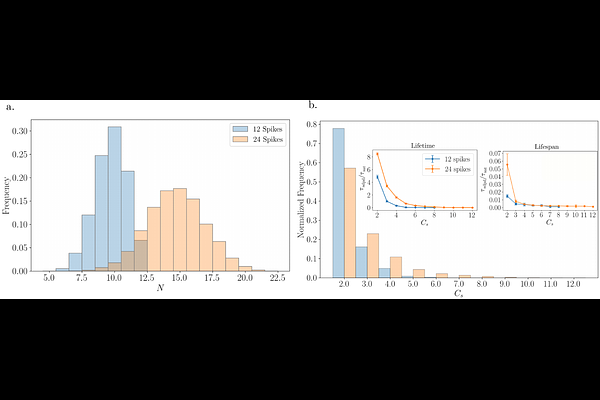Mesoscale Transport of Enveloped Viruses

Mesoscale Transport of Enveloped Viruses
Moreno-Chaparro, D.; Balboa Usabiaga, F.; Ellero, M.; Moreno, N.
AbstractEnveloped viruses are characterized by spike proteins that protrude from and decorate the viral membrane. These proteins play a crucial role in host cell interactions and exhibit dynamic behaviors, such as tilting, sliding, and clustering, which vary across different types of enveloped viruses. For instance, SARS-CoV-2 spikes tilt to facilitate receptor binding, Influenza spikes migrate during infection, and HIV spikes migrate and cluster to enhance infectivity. In this study, we investigate how such dynamics influence the virus mobility. We characterize viral mobility through translational and rotational diffusion coefficients using a mesoscopic model that incorporates the dynamics of both the flexible spike proteins and the viral envelope. Using the smoothed dissipative particle dynamics (SDPD) method, we construct three virion models with varying spike flexibility. The first is a fully rigid virus with static spikes, the second is a model with spikes that tilt but remain fixed in position, and the third is a model allowing both tilting and sliding of spikes across the envelope. Our results show that spike flexibility primarily affects rotational diffusion, whereas the envelope dominates translational mobility of the virus. We also explore spike. clustering driven purely by hydrodynamic interactions. We identify that hydrodynamic interactions alone can be responsible for dynamic clustering of spike proteins. Where, the characteristic size and lifespan of such clusters indicate predominantly doublets and triplets formations. Our findings highlight the role of spike dynamics in whole virion mobility, and motivate further investigations with time-resolved experimental evidence to fully characterize clustering behavior.